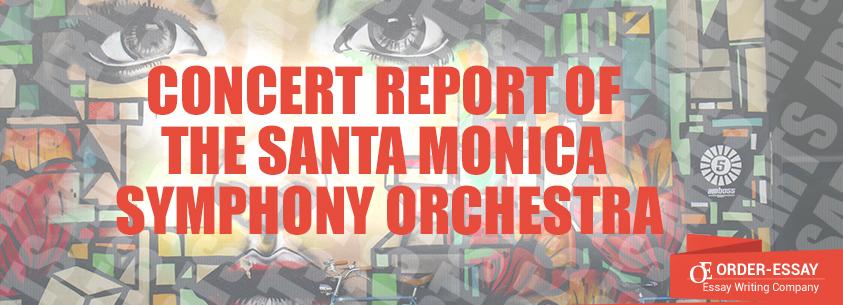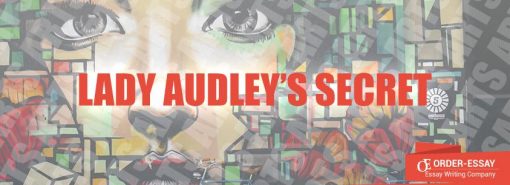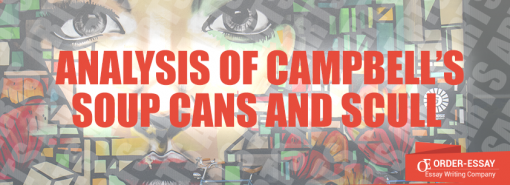
Music is one of the most wonderful inventions of the mankind, which can not only bring the momentary pleasure, but also end a protracted period of depression or a bad mood. Each musical instrument has a tremendous power, not to mention a whole symphony orchestra, a concert of which I was fortunate enough to visit last weekend.
The concert took place on Saturday, December 12 at 7:30 pm at Barnum Hall, Santa Monica High School, 600, Olympic Blvd., Santa Monica. The hall is located near the center, in the western part of Los Angeles, and the road to it will not take long. In addition, all the concerts of Santa Monica Symphony Orchestra are free and open seating, so everyone can dive into the wonderful atmosphere of symphonic grandeur and discover new musical horizons. This time Santa Monica Symphony Orchestra has performed not only the traditional classical music, but also the music, which was composed for the popular and no doubt legendary films. The musical director and conductor of the orchestra, Guido Lamell, has skillfully managed all music scores, therefore, it seemed that the orchestra is one musical instrument. The program of the concert was titled “Veni, Vidi, Vici – Heroes“, and it has obviously penetrated into the deeper meanings of heroic deeds by the research of the musical paths, starting from such classics as Ludwig van Beethoven and ending with our contemporaries, such as John Williams.
First, the orchestra performed the piece “Theme from the Magnificent Seven” by Elmer Bernstein (1922-2004), written in 1960. The film “The Magnificent Seven“, being a sort of a remake of Akira Kurosawa’s “Seven Samurai“, has become a classic of the Western genre; one of the vast reasons is the main soundtrack. The very first notes sound pompous and solemn. Violins create an illusion of rapid movement of a horse or a train. Drums make a clear intonation and motion accents. In the second minute, some danger appears which the heroic Violins parties easily overcome. In the middle of the musical piece the melody becomes smoother, recalling the love line. The music is full of romance and femininity, which also gradually, as it had begun, passes into the familiar heroic beginning of the main melody. Ending is noted by delight and triumph of the kind force. It is worth noting that for this piece, the conductor put on a cowboy hat, which helped to visualize more vividly the effect of the musical power. To avoid the losing of some sharpness of the music for the next musical piece, the conductor wore a Superman’s mantle.
The second song “Superman March” (1978) belongs to the composer John Williams (b. 1932), which has created many wonderful works for the movies. The start of the melody is preparing a listener for the birth of something great. It recalls the opening of knightly competitions or any battles due to the predominance of the quint triads. Then the melody moves smoothly to a very moment of appearance of a certain strength, the strength of Superman, till to its heyday. The trumpets have a special meaning, because throughout the play, first they show some tenderness – that is, the inexperience, and then stir up the situation by low sounds, and, of course, end the composition with triumphant tutti.
The third musical piece “Theme from Jurassic Park” (1993) by the same composer, John Williams, has a global character, as it covers a whole epoch, not a single hero. Here all parties are more lush and full of percussion music. The violins perform solo roles, branching off to the side parties, which draw the adventure sketches in the imagination of the listener. Toward the end, the adventurous melody goes to the piano lyrical digression, which the troubled horn replaces. The piercing violin code ends the melody.
The first part of the concert ends with the legendary “Star Wars Suit for Orchestra” (1977) by John Williams, consisting of four parts. The first one is called “Main Title“. It begins with a loud fight of timpani that marks not just the epochal scale as before, but universal one. The wind section is soloing as the violin one too, but in a smaller part. They play the role of contrast. Drums give some marching tune and ambition.



The second part, entitled “Princess Leia’s Theme“, starts with a solo of pipes, and lasts with a very thin, delicate and feminine tune that the melodic plunk of the harp strings accompanies. Like the female nature, this melody is quite difficult, deep and rich. It has some tinge of sadness that the violins add, but still the positive tone prevails and completes the theme. In the end, the sounds of horns and a single violin solo complete the melody. The third part of the suite “The Imperial March” has a clearly aggressive tone on the one hand, and majestic one on the other. The melody is overcrowded by the onset of the dark forces, through which in the middle of the tune good forces are punched. However, there is a complete dominance of Darth Vader forces, which have the spirit of the famous “Sabre Dance” by Aram Khachaturian, where the melody conveys the feel of the battle and hot passions. The suite ends with the fourth part “Throne Room & End Title“, which, due to a wind section, emphasizes the importance of the battle that took place earlier and its pomposity, and that good always triumphs over evil.
Get a Price Quote
After the intermission, the orchestra played the famous “Symphony No. 3 “Eroica”” (1804) by Ludwig van Beethoven (1770 – 1827), which also consist of four parts. Thus, the listener has the ability to compare the traditional classical music with the works of modern composers. The first part “Allegro con brio” differs by a special mobility and anxiety. The violins perform complex, but, nevertheless, fast passages. The music changes its mood all the time, showing the variety of images and storylines. The second part “Marcia funebre: Adagio assai” has a dark character and a certain sadness. It seems that the melody mourns about its fallen youth. The violins are the soloist, accelerating and slowing down the tempo. In the contrast to the second part, the third one “Scherzo: Allegro Vivace” has a fast rhythm and a cheerful character. It tries to show that life has several sides; violins often play on a staccato, and the orchestra applies a tutti. “Finale: Allegro molto” ends the suite with calm and harmonious violins and pipes. Here, the balance and endurance prevail.
Thus, I should say that the modern music, which is used in many motion pictures, has traditional roots, and applies a variety of proven techniques such as contrast, the right accents and so on. It has impressed me in the concert most of all. In addition, the excellent performance of absolutely all parties says about the extreme love of the musicians and the conductor to the music that inspires the listeners.








